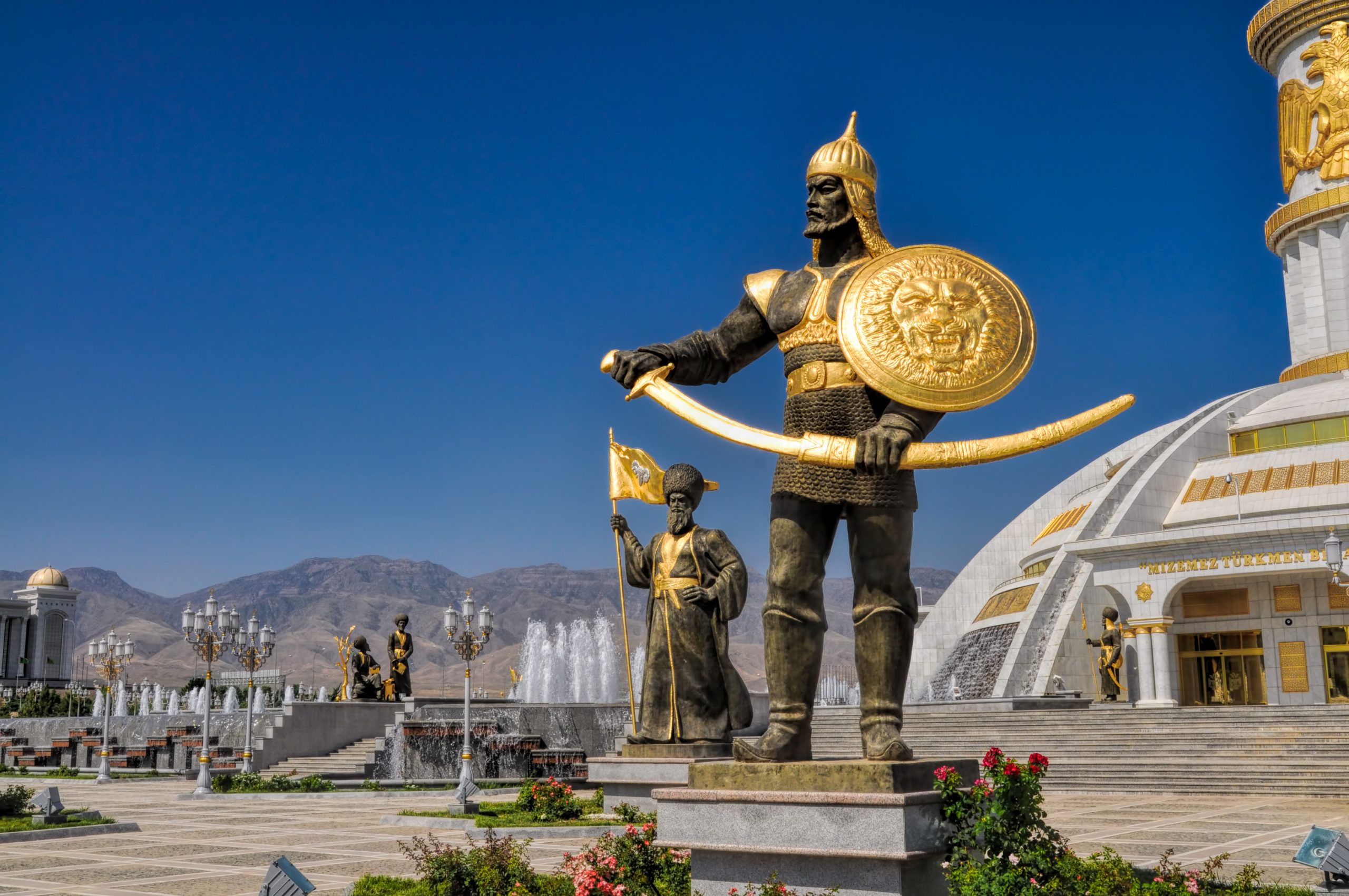The Seljuks in Turkmenistan’s Historical Narrative
In Memory of H.T.T., Turkmen scholar and historian
Turkmenistan will soon be celebrating its 30th anniversary as an independent nation. During its three decades of existence, its rulers have had to recur to the past to build a historical narrative that would lend legitimacy to their regimes and the personality cult they have created. They needed a powerful lineage to claim as precursor to the Turkmen nation, one they could employ to transmit a sense of unity and use for their own purposes. They found this in the Seljuks.
Turkmenistan’s rulers have long refashioned the distant past to bolster the nation, whether it be the semi-mythical Oghuz Khan from four millennia ago, or the Seljuk Dynasty, who would claim victory over the Byzantine Empire in 1071 at the Battle of Manzikert.
The Seljuks first entered the historical record in the 10th century by the name of “Turkmen,” or “Turkoman” and controlled an empire spanning much of the territory of modern-day Turkmenistan and beyond. While it would be problematic to draw a direct line from the Seljuks to the modern-day Turkmen people, they have nevertheless served precisely that role in state narratives. After the Sejuk interval, those that followed, with one possible exception- the Khwarezmian Anushteginid dynasty who took over from the Seljuks– were not Turkmen, being of either Mongol or other Turkic origin. Turkmen identity prevailed through the tribal groups that remained in the area, although it did so without a real sense of statehood.
Despite its embrace of the Seljuks, the current government’s historical narrative has been highly selective. From all the rulers that governed the Seljuk Empire, or parts of it, only six of them feature prominently: Seljuk, Chaghri, Toghril I, Alp Arslan, Malikshah I and Sanjar. Seljuk (died circa 1009) was the founder of the dynasty, while Chaghri and Toghril I conquered what is now Turkmenistan and started expanding their territory.
Alp Arslan (1030-1073) rode west and clashed with the Byzantines. Under his son Malikshah, the empire reached its greatest extent. The next two rulers after Malikshah, his sons Berkyaruq and Muhammad I, are omitted from Turkmenistan’s narrative since they are both associated with stagnation and decline. It is with another of his sons, Sanjar, that the dynasty resurfaces for the Turkmen authorities, and it is with him that it ends.
Sultan Sanjar plays a central role in Turkmenistan’s nation-building efforts. He enjoyed a long reign and, for the most part, was successful in maintaining Seljuk influence. But most importantly, Sanjar was based in what is now Turkmenistan. Although capitals did not mean much given that the early sultans ruled from the saddle, Sanjar established his base in Merv. His mausoleum, albeit restored, is one of the country’s most revered monuments. Ironically, Sanjar owed his downfall to a rebellion of Seljuk’s own Ghuzz tribesmen. This episode presents a thorny issue for modern Turkmenistan’s paranoid regime. In his book Ruhnama¸ former Turkmen ruler Niyazov distorted the event by stating that Sanjar refrained from fighting the rebels, saying they were his relatives. Berdimuhamedow seems to omit this episode altogether.
Seljuks in Modern Turkmenistan
The role the Seljuks played in Turkmenistan is mostly symbolic. They are referred to in the state-controlled media as pillars of wisdom and as role models, drawing parallels with the country’s modern rulers.
In the first volume of the Ruhnama, the Seljuks feature prominently in a long list of dynasties purported to be Turkmen, including the Ottomans and Safavids. “My beloved citizens!” Niyazov wrote, “It is an important fact that great Turkmen heroes, Toghril Beg, Chaghri Beg, Alp Arslan, Malikshah and Sultan Sanjar, succeeded in becoming the sultans of the Islamic World with the states they established, their heroism, prudence, and policies. As the Turkmen Nation, we must study these great personalities. Oh Turkmens, be proud of your lineage!” The presidential emblem he adopted is another example, with the two-headed eagle associated with the Seljuks adapted to have five heads, to represent the country’s five regions. The president also turned to the Seljuks when in 2002 he renamed the months of the year, allocating August and November to Alp Arslan and Sanjar respectively.
The country’s current leader, Gurbanguly Berdimuhamedow, frequently makes reference to the Seljuk dynasty when reprimanding officials, urging them to follow the examples of the great rulers. In The Courageous Glorify the Motherland, Berdimuhamedow outlines the importance of the allegiance to the motherland, setting the example of the Turkmens’ loyalty to the sultanate and the Seljuk state and prompting the reader to emulate them. While in Traditions of Turkmen Statehood, the Seljuk sultans appear in a parable common in the Turkic and Mongol tradition that uses arrows to describe the strength to be found in unity.
The regime has also made efforts to link the Seljuks to Turkmenistan’s contemporary policies. In an article published by the Turkmen Academy of Sciences entitled “Alp Arslan – Pattern of Humanism,” the author not only paints an idealized picture of the sultan and his humane treatment of the defeated Byzantine emperor but compares Alp Arslan’s chivalrous behaviour with Turkmenistan’s current president and his policy of neutrality.
Statues of Seljuk leaders blanket the country’s urban landscape, such as the towering Independence Monument in central Ashgabat, where Seljuk rulers feature alongside 27 other national heroes. Effigies of Seljuk rulers Toghril I and Sanjar adorn the 1 and 5 manat notes of the national currency.
Turkmenistan’s historiography has been crafted since the country’s independence 30 years ago. The selective writing of history has been a key tool used by the successive regimes to cement their legitimacy in the eyes of their citizens and create a sense of unity and allegiance to the nation. The Seljuk dynasty has played a vital role in this process by providing the regimes with a historical base that strengthens the ruling narrative.
Francisco Olmos is a research fellow of the Foreign Policy Center, London and specializes in Central Asian affairs. Follow him on Twitter @fran__olmos

